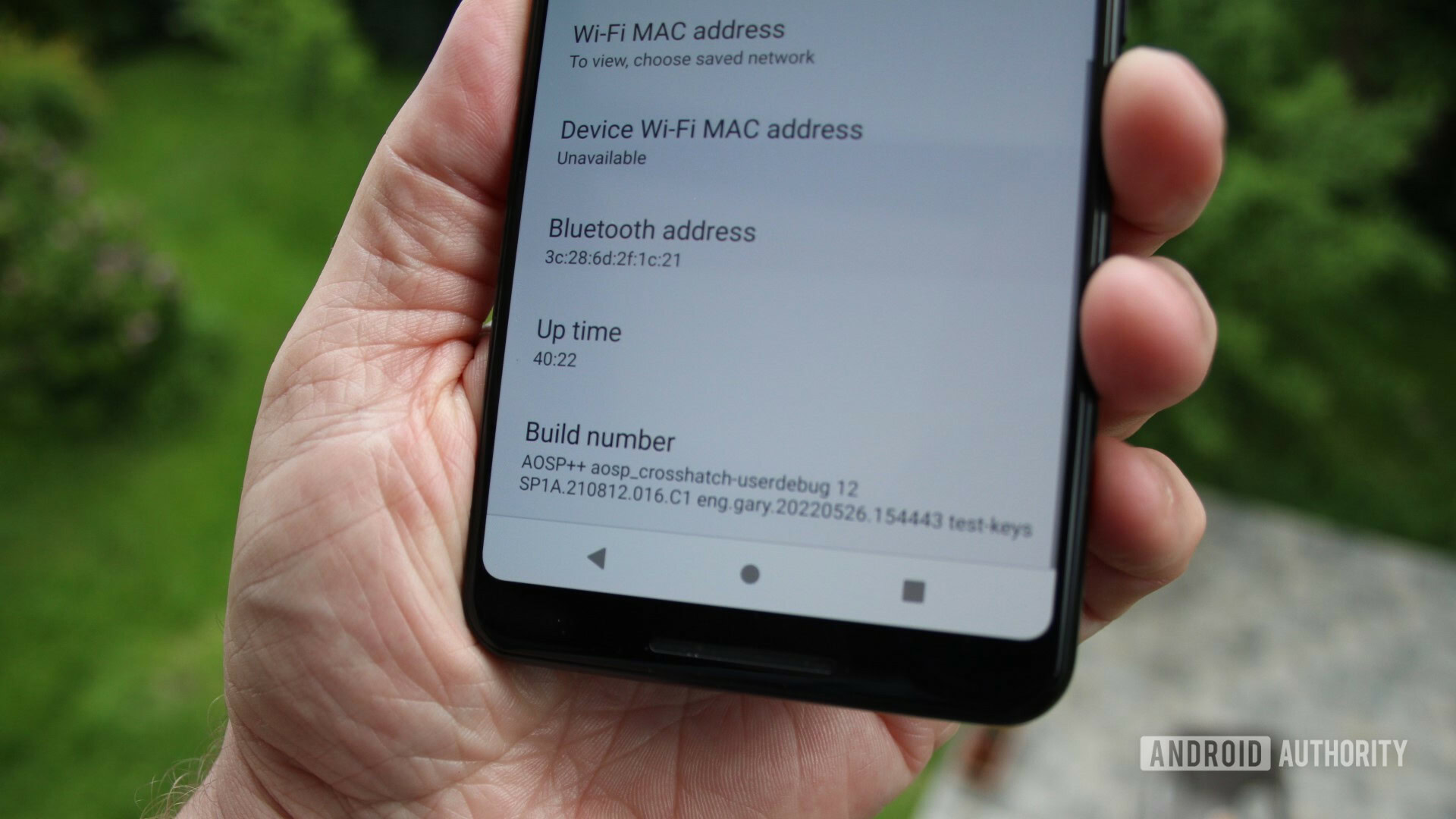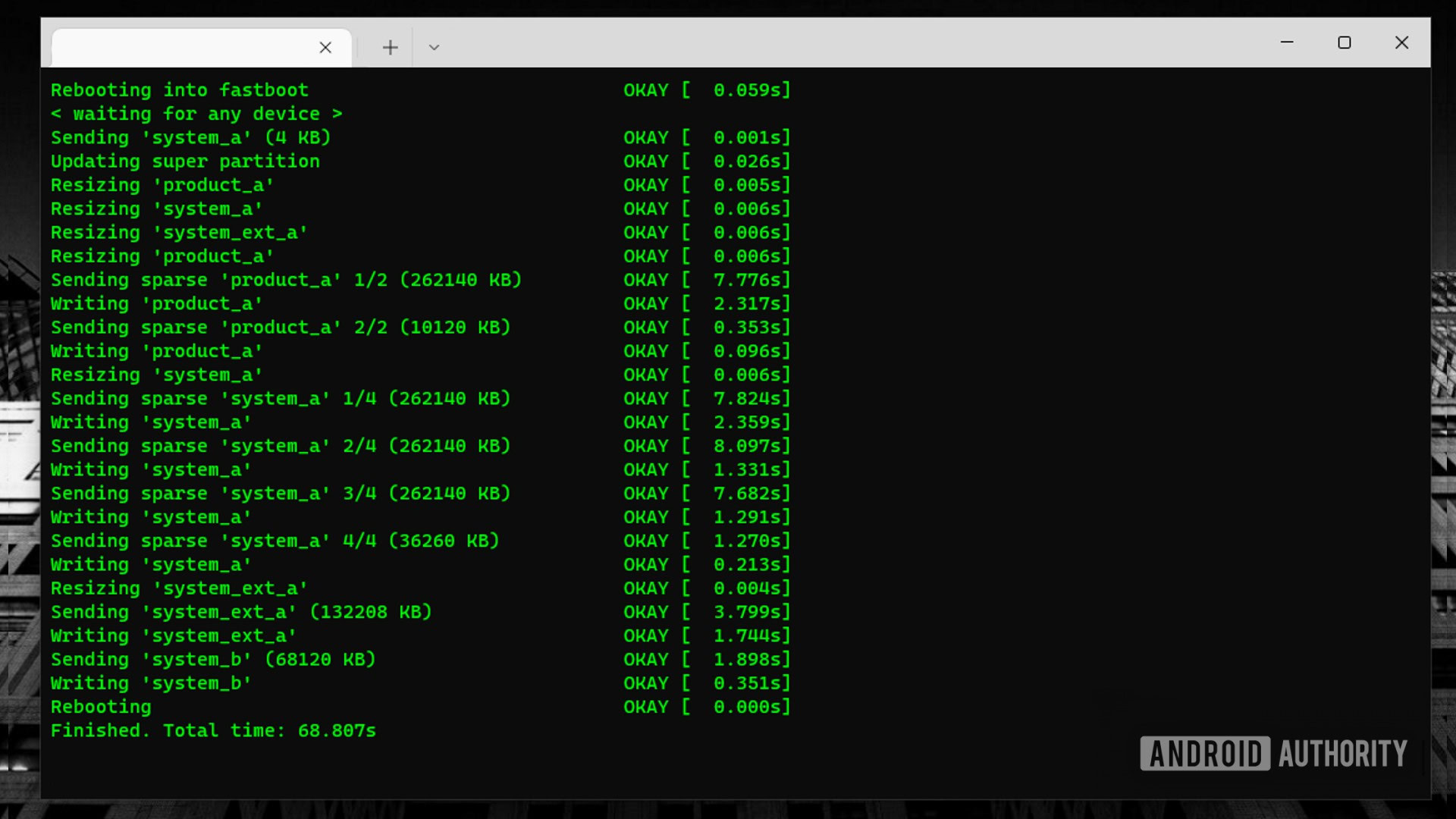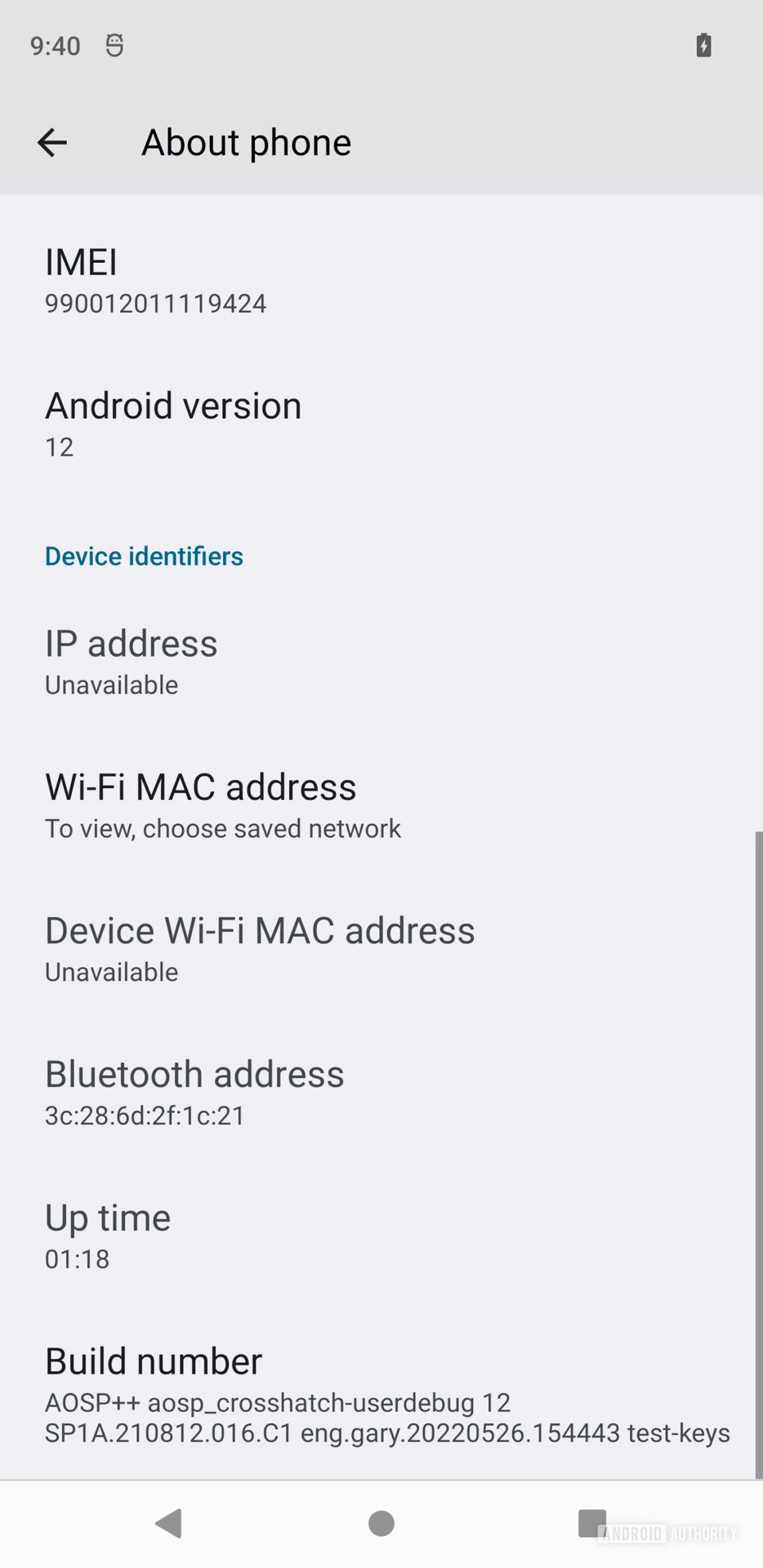One of many key options of Android is its open supply software program heritage. The supply code for the complete working system, together with the kernel, UI, libraries, and key apps, is on the market without spending a dime. Because of this anybody (with the precise technical abilities) can construct Android from supply and flash it onto a appropriate gadget. This flexibility has allowed varied teams — some industrial and a few hobbyist — to develop various distributions of Android. These are generally known as customized ROMs, however a greater title could be personalized working techniques.
Since all the mandatory constructing blocks can be found, possibly you could have questioned how arduous it’s to construct your personal customized ROM, your personalised model of Android! It’s certainly attainable; learn on to seek out out extra.
Warning
Earlier than we dive into the murky world of constructing customized variations of Android, we have to pause and assess the enormity of the duty forward, whereas maintaining our expectations in examine. When you have completely no coding expertise, zero Linux expertise, or no concept what a Makefile is, this isn’t for you.
Do you put in customized ROMs on Android telephones?
1937 votes
Android is an entire working system. It’s complicated and accommodates many various subsystems. Creating an working system as complicated and helpful as Android didn’t occur in a single day. Because of this any customization you want to carry out should begin small. Creating an alternate Android distribution that’s radically totally different will take many hours of arduous work and dedication.
If you’re conversant in writing code and know a bit about Makefiles and compilers, then making your personal customized Android ROM generally is a rewarding expertise.
Stipulations
Theoretically, it could be attainable to construct a customized Android firmware for any computing gadget able to working a contemporary working system. Nevertheless, to make life straightforward, we are going to restrict ourselves to constructing Android for Google’s Pixel smartphones.
To construct Android, you’ll need entry to, and familiarity with, Linux. You’ll be utilizing the terminal so much, and you must be assured with shell instructions. You would possibly be capable of use a Linux digital machine, however I’d advocate utilizing a devoted PC.
You will have a minimum of 400GB of disk area and a minimum of 16GB of RAM, however 32GB or 64GB is advisable. You will have a contemporary 64-bit CPU with a number of cores. Google says that it takes about 5 occasions longer to construct Android on a 6-core machine with 64GB of RAM than to construct it on a 72-core machine with an analogous RAM. In my testing, I foolishly tried to construct it on a dual-core machine with a CPU from 10 years in the past. It took about 24 hours!
Be taught endurance. Constructing Android isn’t fast. Synchronizing the supply repository can take hours (relying in your Web connection velocity). Additionally, a full clear construct will take a number of hours to finish. Even after making a minor change, you would possibly want to attend 10 to twenty minutes for a construct. All of it is determined by your {hardware}. Don’t count on to have your new model of Android up and working in only a few moments.
The Android Open Supply Mission model doesn’t embody any Google providers. So issues like Google Play, YouTube, Gmail, and Chrome will likely be lacking. There are methods to flash Google Cell Companies onto your customized firmware, however I’ll depart you to learn the way to try this. Trace: Seek for “set up gapps.”
The place to begin when constructing your personal Android ROM

Robert Triggs / Android Authority
The essential course of for constructing a customized ROM is that this: Obtain and construct Android from the Android Open Supply Mission, then modify the supply code to get your customized model. Easy.
Google supplies some wonderful documentation about constructing AOSP. You want to learn it, re-read it, after which learn it once more. Don’t soar any steps, and don’t assume you understand what it is going to say subsequent and skim over components.
I received’t repeat verbatim what’s within the construct directions, however the basic steps are:
- Arrange a construct atmosphere — together with putting in the proper improvement instruments.
- Seize the supply — that is finished utilizing the “Repo” software.
- Acquire proprietary binaries — a few of the drivers are solely launched in binary type.
- Select a goal — utilizing the “lunch” software.
- Begin the construct — utilizing “m”.
- Flash the construct onto your gadget — utilizing ADB and fastboot.
Suggestions and tips for the customized ROM construct course of
That every one sounds straightforward, however there are just a few gotchas alongside the best way. Listed here are some notes I made throughout the course of that you simply would possibly discover useful:
Arrange a construct atmosphere — Ubuntu 18.04 is the advisable construct OS. You will have to put in varied development-related packages like gcc, git, python, and many others. The grasp department of Android in AOSP comes with a pre-built model of OpenJDK, so no further set up is required. Nevertheless, older variations of Android require a separate set up of the JDK. You must use OpenJDK. Full directions on organising your construct atmosphere might be discovered right here.
Python3 — Python 2 assist is deprecated. To construct AOSP, you must use Python3. Should you get Python lacking errors, this trick ought to repair it. It creates a mushy hyperlink between python and the python3 binary:
Code
sudo ln -s /usr/bin/python3 /usr/bin/pythonSeize the supply — That is a straightforward step, however it could possibly take a very long time, as in hours. Such a big obtain solely occurs as soon as; additional syncing with the principle supply tree will likely be incremental. To hurry up the obtain, use the -c (present department) flag and the -jthreadcount flag like this:
Code
repo sync -c -j8Acquire proprietary binaries — The binaries come as self-extracting scripts. Uncompress the archives and run the self-extracting script from the basis of the supply tree. The binaries will likely be put in within the vendor/ listing. Observe that there are two units of binaries for a lot of Pixel units, one from Google and one other from Qualcomm. You want each. Ensure you obtain the model of the binaries that corresponds with the model of AOSP you might be constructing.
Select a goal — Take a look at this record of Pixel units and decide the related construct title. For instance, if in case you have a Pixel 7 Professional, for instance you’ll use aosp_cheetah-userdebug.

Gary Sims / Android Authority
Begin the construct — You begin the construct utilizing m. The construct system can run a number of jobs concurrently with the -jN argument. Should you don’t use the -j argument, then the construct system will robotically choose an optimum process rely to your system.
Flash the construct onto your gadget — You will have Google’s platform instruments to flash your construct onto a bodily gadget. You need to use the Android SDK Platform-Instruments from Google, or alternatively, you can find adb and fastboot in ./out/host/linux-x86/bin.
Flash it

Gary Sims / Android Authority
Upon getting efficiently flashed it onto your gadget utilizing “fastboot flashall -w,” you will note a vanilla model of AOSP. There are not any Google providers, no Play Retailer, and just a few core apps. That is the naked bones of Android.
Nevertheless, congratulations are so as. You’ve got managed to construct Android from its supply code and flash it onto a tool. That’s no imply feat.
Customization
Now that you’ve got Android up and working, you can begin to customise it and make your personal specialist ROM. That is truly the place issues get arduous. You might be about to tinker with the center of the Android working system, and the issue is that Android is large. My working listing is 350+GB of information, together with the supply code, the graphics, the compiled binaries, and the instruments. That’s lots of stuff.
So, begin easy. Listed here are two easy customizations that may get you going and begin you on the trail to being an Android firmware hacker.
Customise the messaging app
A comparatively straightforward customization is to vary one of many pre-built apps. Should you had been to develop a full various Android distribution, modifying or changing a few of the core apps could be a given. On this case, we are going to simply tweak it, however the rules stay the identical for extra complicated modifications and revisions.
The core apps are discovered within the listing ./packages/apps/, and we have an interest within the Messaging app in ./packages/apps/Messaging/. Drill down by means of res/values/ and edit strings.xml. You may edit it together with your favourite GUI editor or if you wish to keep on the command line, then use vi or nano.
strings.xml accommodates all of the English textual content for the app. If you’re utilizing one other language, you’ll need to seek out the related XML file within the res/ listing.
Discover the place in strings.xml the place conversation_list_empty_text is outlined. The string half begins with “When you begin…”. Exchange it with your personal string, one thing like, “Begin a brand new dialog and also you’ll see it listed right here.”
Save the file and begin one other construct utilizing the m command. As soon as the construct has completed, flash it onto your gadget and reboot. Begin the Messaging app and search for the brand new textual content. Clearly, this can be a easy modification, however the potential is there to change any of the default apps in no matter means you please.

Gary Sims / Android Authority
Extra customization
Any self-respecting customized Android distribution should embody some details about the ROM itself. To do that, we are able to alter the system properties. Discover the sysprop.mk file within the construct/core/ listing. Edit it and discover the road that defines BUILD_DESC. For a easy alteration, put AOSP++ firstly of the road after the :=, like this:
Code
BUILD_DESC := AOSP++ $(TARGET_PRODUCT)-$(TARGET_BUILD_VARIANT) $(PLATFORM_VERSION) $(BUILD_ID) $(BUILD_NUMBER_FROM_FILE) $(BUILD_VERSION_TAGS)Save the file, rebuild and re-flash the firmware in your gadget. When you reboot, go to Settings->About Cellphone and scroll to the underside:

Gary Sims / Android Authority
FAQ
Since you might be constructing the ROM, then you’ll be able to verify its contents. Because of this it’s assured to comprise no malicious code or spy ware. However, it’s price noting that your knowledge isn’t “protected” if you set up a customized ROM, even one you constructed your self, as it is going to possible be erased throughout the flashing course of. There’s additionally the hazard of “bricking” your gadget.
Should you observe the steps on this article you should have created your personal customized ROM for Android, based mostly on AOSP. Nevertheless, the arduous half is the precise customization. You must take into account together with different apps, including ringtones, together with customized wallpapers, and even tweaking the Linux kernel
Whenever you purchase a smartphone it comes with Android preinstalled from the producer. This is called the ROM, or higher nonetheless the firmware. Third-party software program constructed to switch the default firmware is called a customized ROM.
AOSP stands for the Android Open Supply Mission. It’s the open-source basis and supply code that makes up Android. The largest distinction is that ordinary Android additionally consists of Google Companies just like the Play Retailer, Gmail, YouTube, and many others.
AOSP is an open-source foundation for Android. It’s maintained by Google. AOSP is free to make use of and alter beneath its open-source license. Producers like Amazon and HUAWEI are free to tweak the mission for their very own functions and have developed their very own spin-offs, together with the multi-purpose Fireplace OS. AOSP can’t present kernel gadget drivers for each {hardware} configuration on the market. It additionally doesn’t include Google’s software program just like the Google Play Retailer or Google’s providers that allow options like cellular funds, voice instructions, and cloud storage.
The 2 modifications I’ve made are very primary, and plenty of extra issues could possibly be finished, together with pre-installing different apps, including ringtones and wallpapers, and tweaking the kernel. Nevertheless, I hope this has given you a style of what’s attainable or a minimum of offer you an concept about how one can construct a customized AOSP ROM and tinker with the innards of Android.